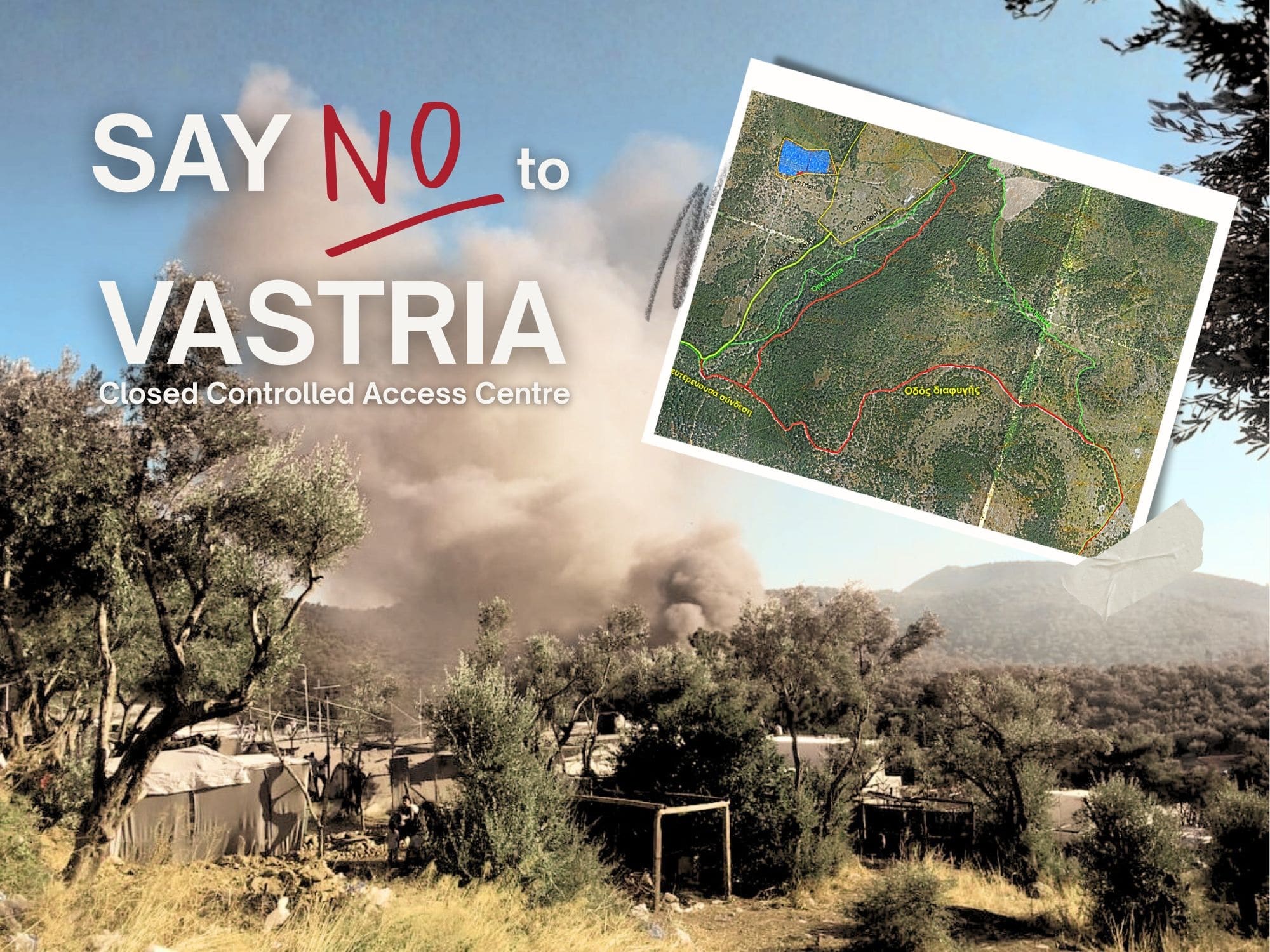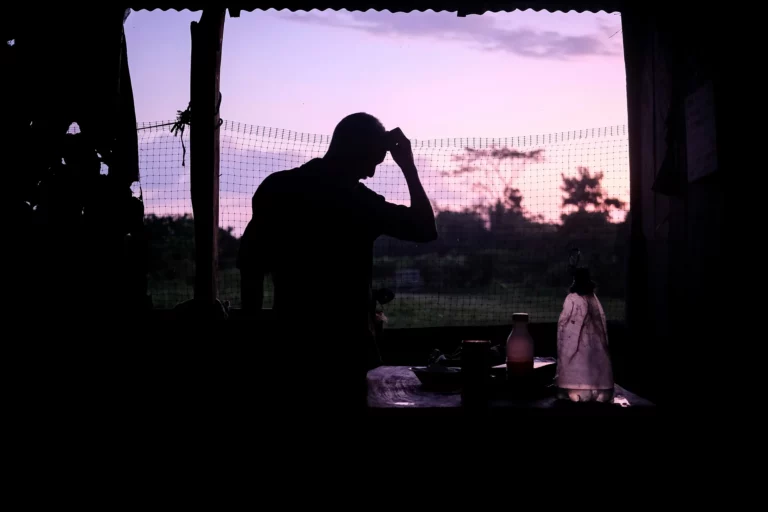The full text of the objections to be co-signed, which will be submitted by Community Peacemaker Teams – Aegean Migrant Solidarity, is available here (only in Greek).
On 1 October 2025, Greece’s Ministry of Migration and Asylum submitted an amended Environmental Impact Assessment (EIA) for public consultation. The EIA concerns the detention centre under construction in Vastria, Lesvos. Countless organizations and experts have already pointed out that the construction and potential operation of the Vastria detention centre poses serious risks for its intended population: migrants and staff working in the facility. Given the site’s location, it also puts at risk the entire island of Lesvos.
There is no political or social consent for the construction of Vastria CCAC, and a significant part of the island’s population rejects it. This consultation, open until 11 December 2025, is our chance to register our objection. We invite you to add your name to the list of signatories to tell the competent authority why these amendments fail to address Vastria’s risks.
How the EIA fails to mitigate risks
Many of the environmental impacts are already visible and irreversible now, before the facility has been completed. They are among the major issues raised by Vastria. The design and implementation of Vastria call into question issues related to constitutionally fundamental rights, such as the rights to life, safety, health, education, etc. However, at this point in time, we must focus our attention and objections on the amended Environmental Impact Assessment.
Despite the strong objections and concerns regarding the construction and operation of the facility, and despite the critical omissions in the earlier approved EIA, the amended EIA does not address any of the previous problematic points. Instead, it adds two additional interventions that will further burden the sensitive and highly important ecosystem of the area.
Furthermore, the study was submitted at a stage when the majority of the construction work has already been carried out, effectively nullifying the public consultation process and violating the fundamental principles of transparency and public participation in environmental decision-making.
In summary, the key points of objection are the following:
1. Lack of substantive environmental assessment
The amended EIA does not meet legal requirements, as it assesses only the installation of a photovoltaic station and fails to examine a second critical intervention: the opening and upgrading of a secondary forest road designated as an “escape route” for thousands of people.
This omission is particularly serious because the road cuts through the core of the Natura 2000 protected area “Mount Olympos of Lesvos.” In addition to the opening of the road, significant cumulative technical works are planned (culverts, widenings, anti-erosion works, logging), and interventions have already taken place without authorization under the ANTINERO fire-prevention program.
The study under consultation is therefore incomplete and violates environmental legislation requirements.
2. Absence of a Special Ecological Assessment
The proposed escape route lies within a Natura 2000 protected area and includes new alignments and interventions in streams. This requires a Special Ecological Assessment (SEA) which, crucially, has not been submitted. The reference to an older SEA cannot cover the new interventions, as the previous study does not assess the proposed works or their cumulative impacts.
This omission raises issues of legality, since the integrity of the ecosystem is threatened by potentially irreversible interventions.
3. High risks to human life in the event of a wildfire
The Vastria forest is characterized by extremely high risk of mega-wildfires. A specialized analysis conducted for the area shows that the pine forest has maximum fire potential and a danger rating of 9 to 10 on a scale of 1-10.
The proposed “escape route” passes through dense, highly flammable pine vegetation and runs parallel to the main access road at a distance of a few hundred meters. It does not provide a meaningful alternative exit in the event of a rapidly spreading wildfire.
In practice, the proposed route may not only fail to provide safety but may lead to the entrapment of thousands of people. Placing a detention facility in such a high-risk area violates the fundamental right to life and safety and contradicts the precautionary principle that underpins environmental legislation.
4. Serious issues regarding the facility’s water supply
The study presents inaccurate and insufficient information regarding water supply. The approved borehole has lower capacity than required, while the existence of a second “backup” borehole has not been confirmed. Vague references are made to alternatives – a desalination plant or water tankers – without any environmental impact assessment.
The lack of a coherent, realistic, and licensed water-supply plan demonstrates that the project is proceeding without basic infrastructure in place.
5. “Fragmentation” of the environmental licensing process
Since the start of the project, the Ministry of Migration and Asylum has ignored required environmental regulations. Much of the construction has therefore proceeded without the necessary approvals and oversight, despite the significant ecological sensitivity of the area.
The ongoing amendments to the project’s environmental terms have sought to retroactively cover persistent deficiencies in the environmental licensing of the facility and its ancillary works.
Now, once again, the new amendment under consultation further burdens the area under study. The study refers also to future amendments concerning the facility’s water supply. This piecemeal approach raises serious issues of legality and requires a comprehensive study of the cumulative and combined environmental impacts of the project and its associated works, as well as other projects under consultation in the area (e.g., the island’s electrical interconnection).
6. Violation of fundamental rights
The remote location, unsafe access, inadequate water supply, and proximity to a high wildfire-risk area create an environment that places at serious risk the rights to life and safety, health, dignity, legal support, and social oversight.
International experience shows that isolation and lack of transparency in such facilities routinely lead to human-rights violations.
Conclusion
The amended Environmental Impact Assessment for the Vastria Detention Center presents serious gaps, omissions, and inaccuracies. It does not fully assess the real environmental impacts, downplays wildfire risks, and fails to ensure conditions that protect the life and dignity of the people who will be held in the facility as well as the staff.
We call on the competent authorities to:
- Reject the EIA under consultation
- Immediately halt construction work
- Hold accountable any parties responsible for violations committed during construction
Click here to add your name to the list of signatories and say “NO” to Vastria.




